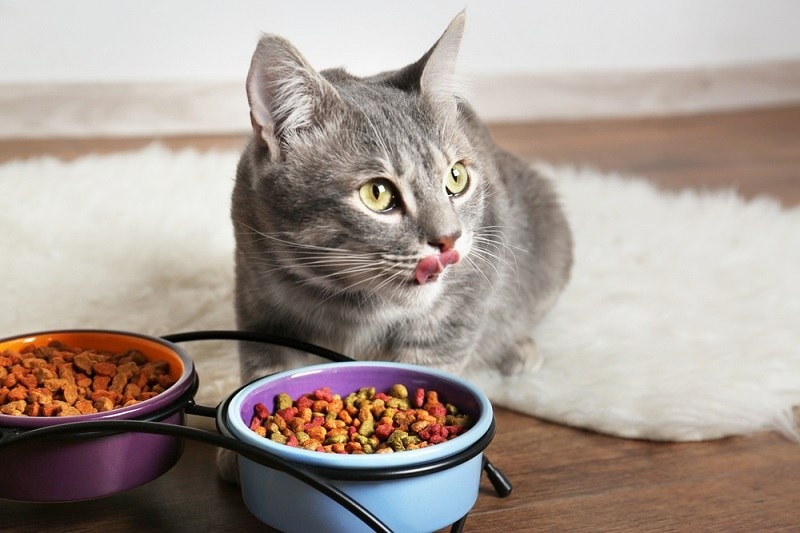
It is no secret that the majority of cats in the United States are obese or overweight. Studies show that excess fat harms a cat’s health and longevity because it increases the animal’s susceptibility to diabetes, heart disease, osteoarthritis, and many types of cancer.
Consequently, pet parents are avoiding fat-rich diets. However, is avoiding that the solution? More importantly, do cats need fat in their diet?
Yes, they absolutely do need fat in their diet. Cats derive some essential fatty acids from dietary fat, meaning they need fat for survival. In this article, you will learn the importance of dietary fat to cats.
The Importance of Fat in a Cat’s Diet

Your cat is an obligate carnivore, meaning it relies solely on a meat-based diet for survival. Therefore, unlike omnivores and herbivores, felines do not obtain energy from carbohydrates since their digestive tracts are not designed to process plant-based matter.
Instead, cats derive energy from animal fats. Therefore, the most important function of fat in a cat’s diet is to provide the feline with energy. Additionally, animal fat is essential for the following processes:
As mentioned, cats also derive essential fatty acids from animal fat, most of which are omega fatty acids. Omega fatty acids play a critical role in a cat’s overall health. They are essential for feline vision, reproductive health, a more robust immune system, and healthier skin and coat.
How Much Fat Should Be in a Cat’s Diet?
One way to tell the amount of fat a cat requires is by looking at the composition of its natural food: mice. The nutritional profile of a mouse consists of 55.8% protein and 23.6% fat.
The fat content in a cat’s diet should be at a similar level, 20%-24%.
However, the quality of that fat is what really matters. Avoid cat foods that do not name their fat sources. Instead, choose products with named fat sources, such as chicken fat.
How to Ensure a Cat Food Has All the Essential Nutrients
The easiest way of ensuring your kitty gets all the nutrients it requires is by only feeding it foods with an Association of American Feed Control Officials (AAFCO) statement of nutritional adequacy on their labels.
AAFCO provides the guidelines pet food manufacturers should follow when creating their foods. Those guidelines include standard ingredient definitions and nutritional requirements. Therefore, for pet food to get AAFCO’s seal of approval, the manufacturer must take their product to a third-party testing facility for analysis to prove they followed AAFCO’s guidelines.
As such, you get a higher level of accountability by buying foods that have an AAFCO statement on their label, which is why we recommend avoiding products that do not have that statement.
- NO MESS - The 360° tray on this cat food and water bowl set has a raised design to catch and...
- WHISKER FRIENDLY - Shallow and wide metal containers with flat bottoms ensure your kitty can enjoy...
- CHEW-SAFE MATERIALS - Kittens and cats love chewing on silicone and soft rubber - but it's a choking...
High-quality cat food is an important part of fostering a long and healthy life for your cat but the right cat food and water dish will promote good posture, offer whisker relief, and aid in good digestion. The Hepper NomNom Cat Bowl is our favorite bowl since it offers all of the above and is beautifully crafted to meet modern home stylings. The wide tray design catches any food and water spills and the entire setup is dishwasher safe. Learn more about the Hepper NomNom Cat Bowl here.
At Pet Keen, we’ve admired Hepper for many years and decided to take a controlling ownership interest so that we could benefit from the outstanding designs of this cool cat company!
Conclusion
Your cat needs fat in its diet. Dietary fat provides your cat with energy, in addition to boosting its overall health. Therefore, do not limit the amount of fat in your cat’s diet as a means of managing the animal’s weight. If your pet is overweight, switch to a fat cat diet instead.
See also:
Featured Image Credit: mik ulyannikov, Shutterstock








